2019 Triumph Street Twin Review
Motorcycle Test by Vicko
I admit it, I didn’t actually expect the Triumph Street Twin to be all that different from the deliciously laid back Street Scrambler I’d spent a couple of weeks getting to know and love. Check out my full review here (link).
I mean they share the same engine, gearbox, forks, shock, brakes and frame (almost). I assumed it was pretty much a styling exercise between them… right..? Ahh… yeah nah.
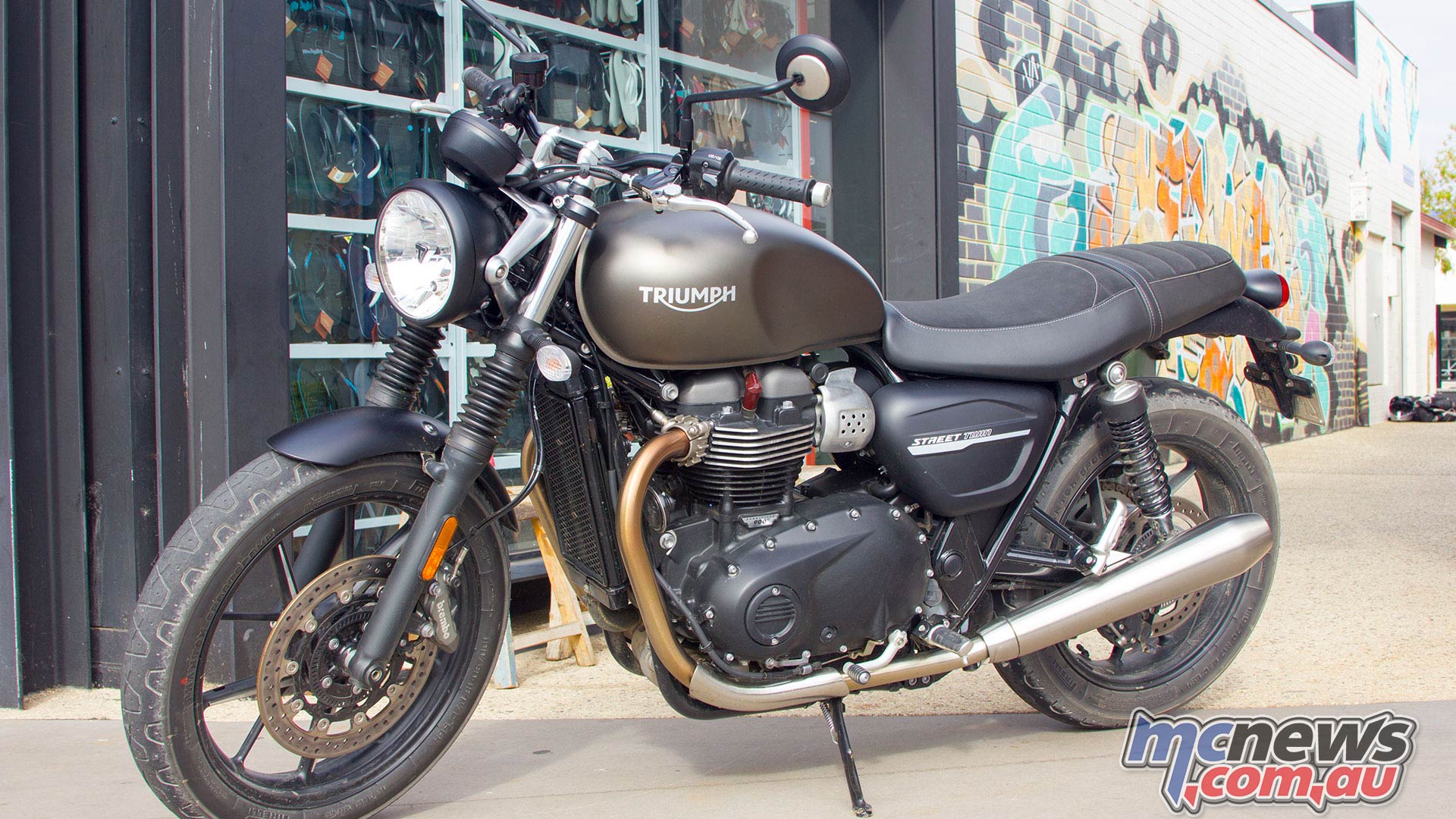
I mean obviously they’re still quite similar. But the subtle differences combine to make for quite a distinctly different riding proposition. There’s no doubt they’re brothers from the same mother, but they are more than skin deep apart on the road.
Figuring out which one is right for you will depend on what look blows your hair back in terms of styling but also where/how you’re going to be riding it. Let’s quickly re-cap on the common elements we found with the Scrambler for those who shamefully missed my earlier review. Here’s a picture of the Street Scramber for comparison.
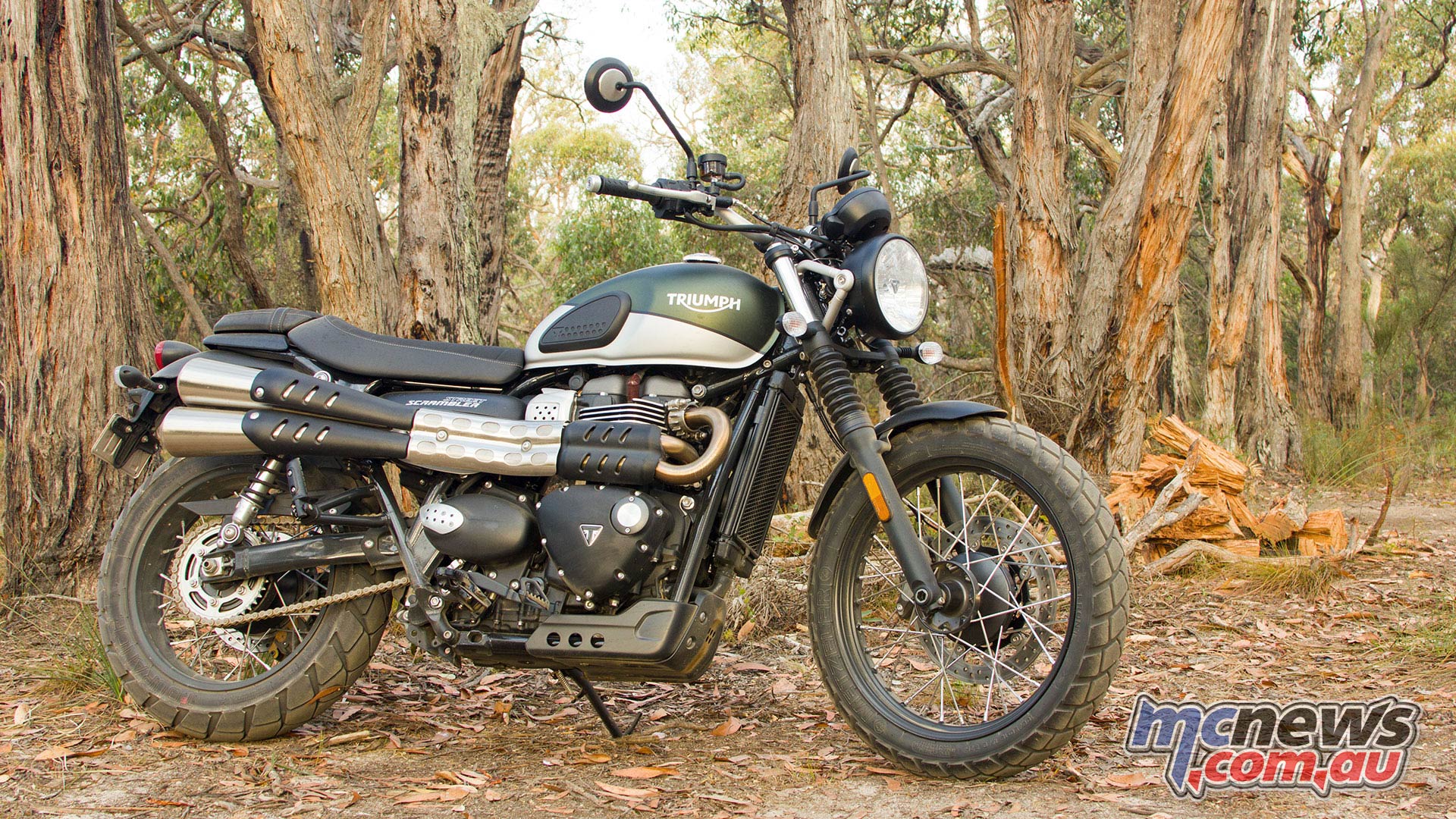
2019 Triumph Street Scrambler | Reviewed (link)
- Effortless laid back fun – 100% chilled and ready for grins
- Silky smooth 900cc Bonneville twin with deceptive helpings of torque
- Ride position spot on for the classic rider in all of us
- ‘Small’ overall dimensions, but without feeling cramped
- Immediately accessible in terms of feel and performance
- Everything ‘works’
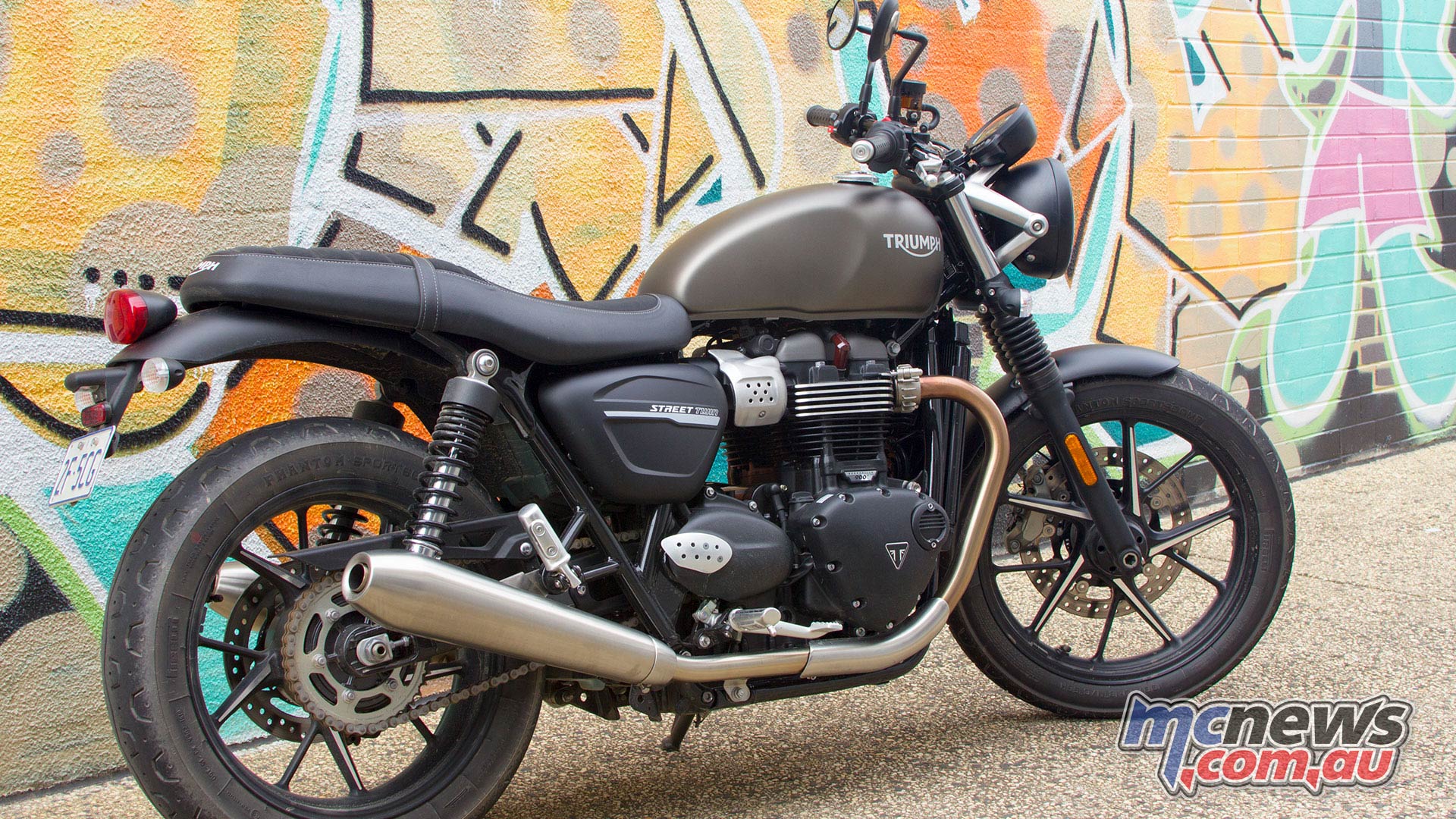
Initially, throwing the leg over the Street Twin it felt pretty much the same. To be fair I didn’t even twig that the bars were 50mm wider at first. Not until I tipped into the first corner when it quickly became apparent that I needed to rethink the similarities and differences between the bikes a little further.
The Street Twin is clearly more responsive to tip into corners and much happier on its side. It’s still no sports bike obviously, but is eminently more capable from a handling point of view. It changes direction willingly, no doubt helped by the slightly tighter steering rake and more rounded tyre profile of the Pirelli Phantom Sportcomp, compared to the flatter dual purpose Tourances on the Scrambler.
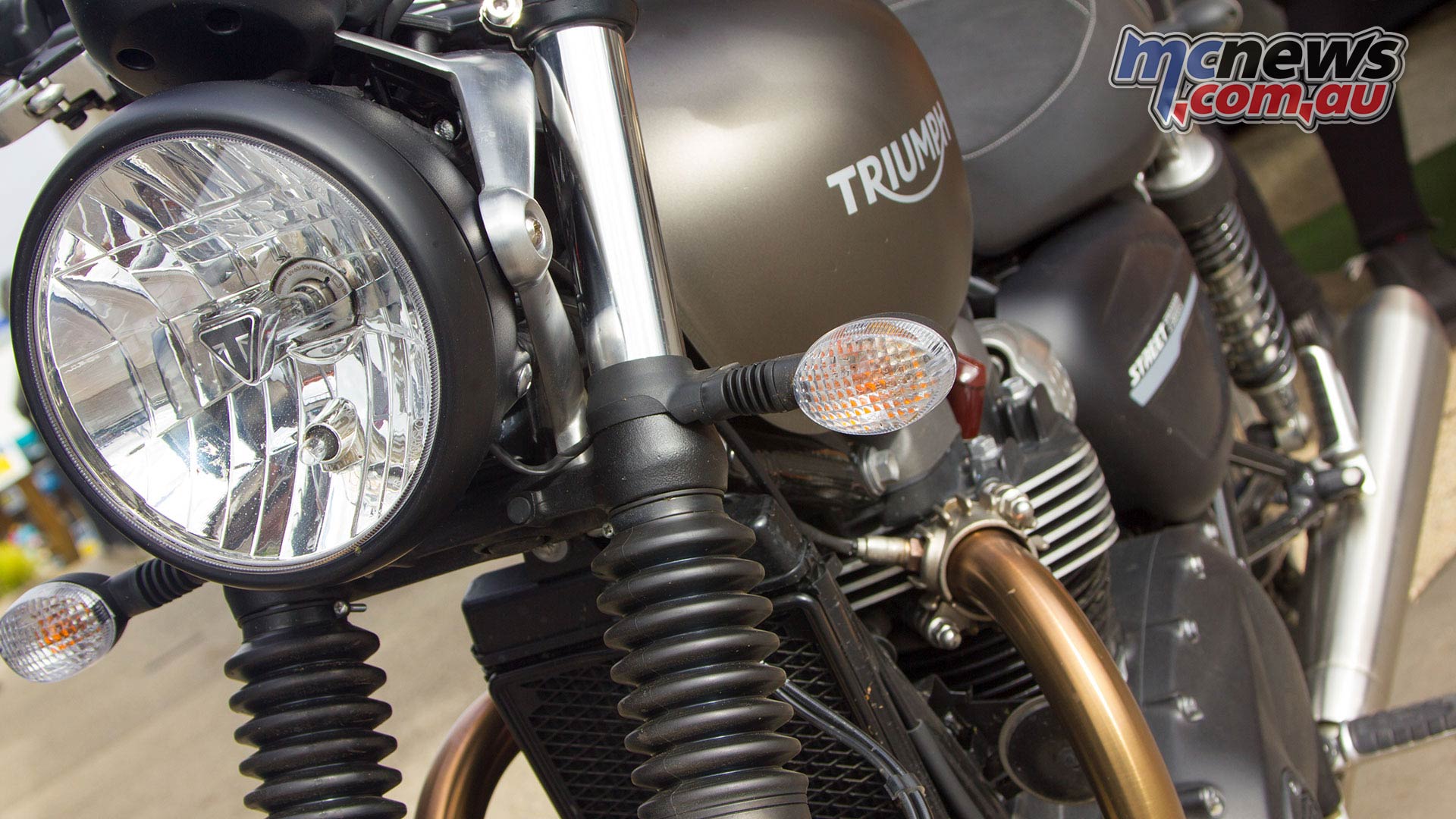
Add that to a more responsive throttle action that gives the bike quite a different feel. Where the Scrambler throttle response is soft, feeling almost delayed off idle at first (which gives it that laid back feel), the Street Twin feels more immediate.
It has a slightly different engine tune, along with that aforementioned different throttle action enabled by the ride by wire techwizardy. The spec’ sheet says that the peak torque arrives 600rpm higher on the Twin at 3800rpm, but that’s not what it feels like when combined with the more instant throttle response.
It feels like another five or six ponies have been liberated. Even though the spec’ sheet again says they’re both dishing out 65 hp. If I was a betting man I’d have lost some coin there no doubt. So it steers better and goes better. What else?
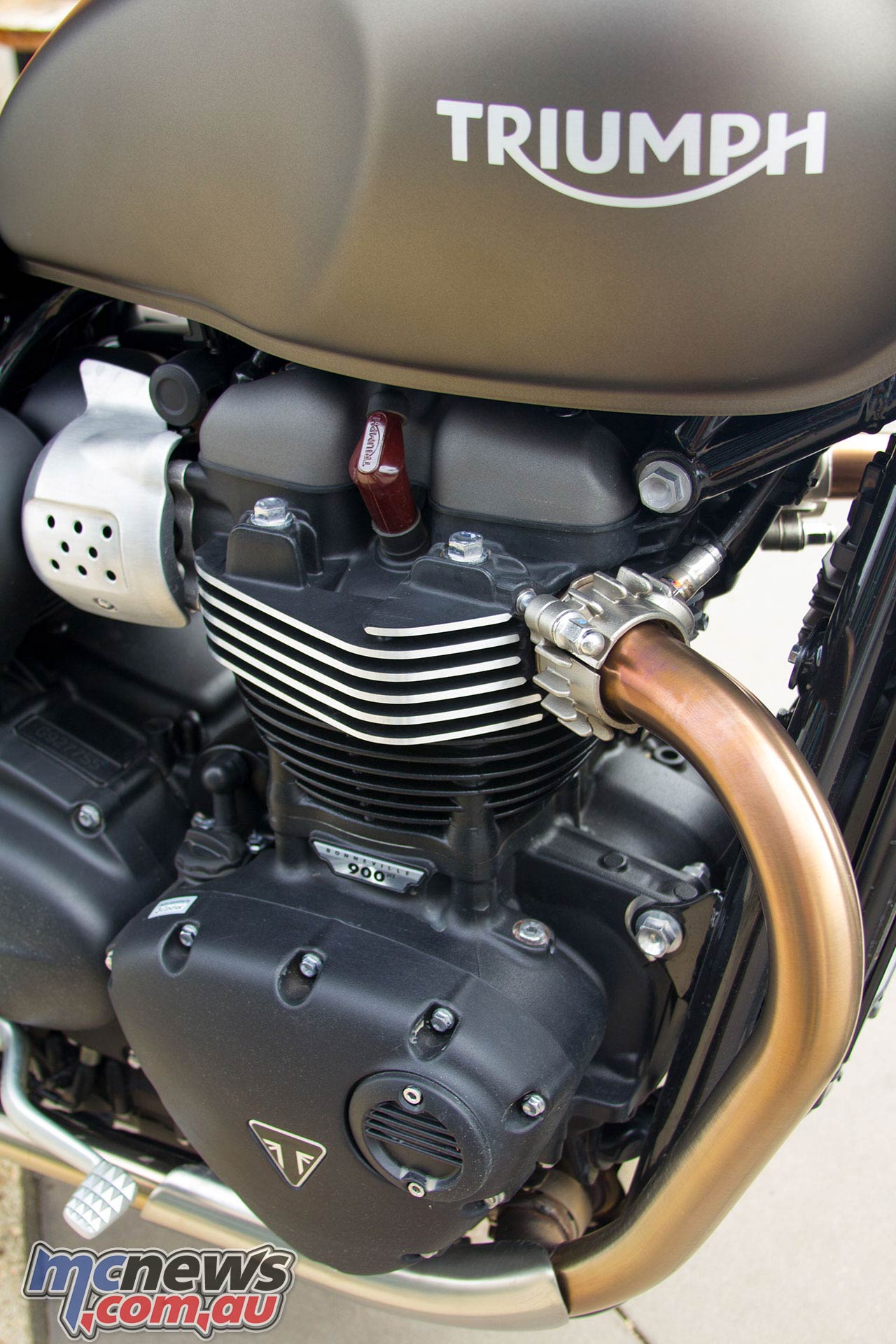
Well even though it has the same Brembo four-piston caliper (with ABS), it feels like there’s more bite when you get on the picks. At the time of writing I couldn’t confirm if the Twin was running different pads, or it was all down to better tyres and sharper geometry. But the brakes definitely feel slightly more willing.
That’s a lot of ticks already, translating into a more sporting ride. The trade-off is that the bike loses some of the oh-so-laid-back charm of the Scrambler, so it’s really more about what you want out of your bike… It’s still a charming ride, just a different flavour.
Styling wise it’s the more classic looker of the two. A pair of low sweeping pipes (one each side) are well executed, a more pillion ready seat and the absence of protectors on the tank indents translates into a genuinely classy looking machine. From the front in particular, it is a well-proportioned and finished design.
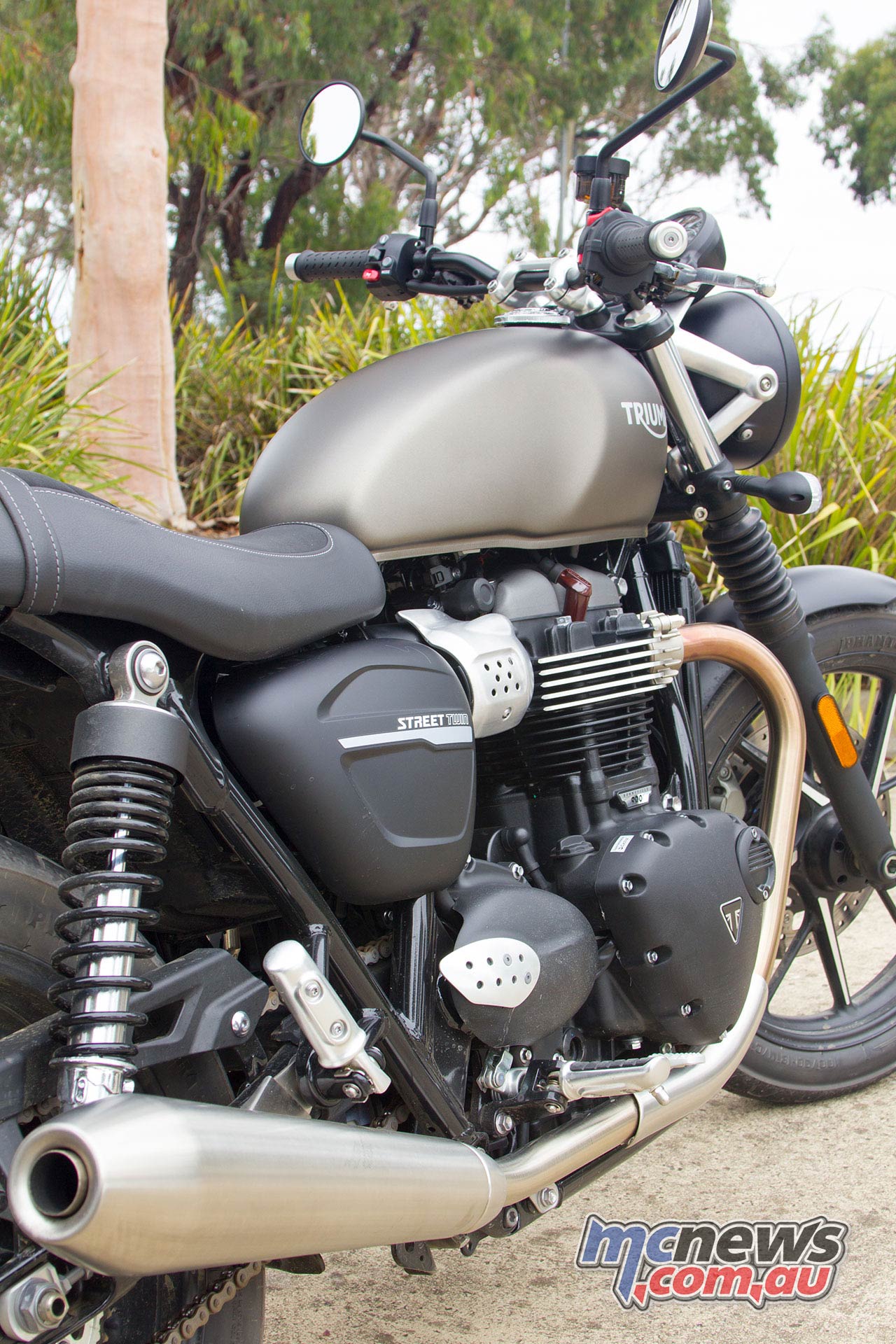
It makes me wonder if they started with this design first and then adapted it to the Scrambler, which doesn’t seem to be quite as photogenic from the same angles. That might be a geometry thing, or maybe it’s just my eyes, I’m not sure.
What do I like less about the Street Twin compared to the Scrambler? Well, they both don’t have a whole lot to pick faults at to be fair.
The most awkward thing on the Twin is finding the side-stand hidden down under the sweeping pipe. You get used to it, and there’s no real way around it if you want the pipe right there. Things are getting tough when the side-stand is the only real thing that stands out as annoying…
The suspension is fit for purpose, as long as you don’t start pretending its a bit more sporty than it actually is, then the limits in damping control do start to be felt.
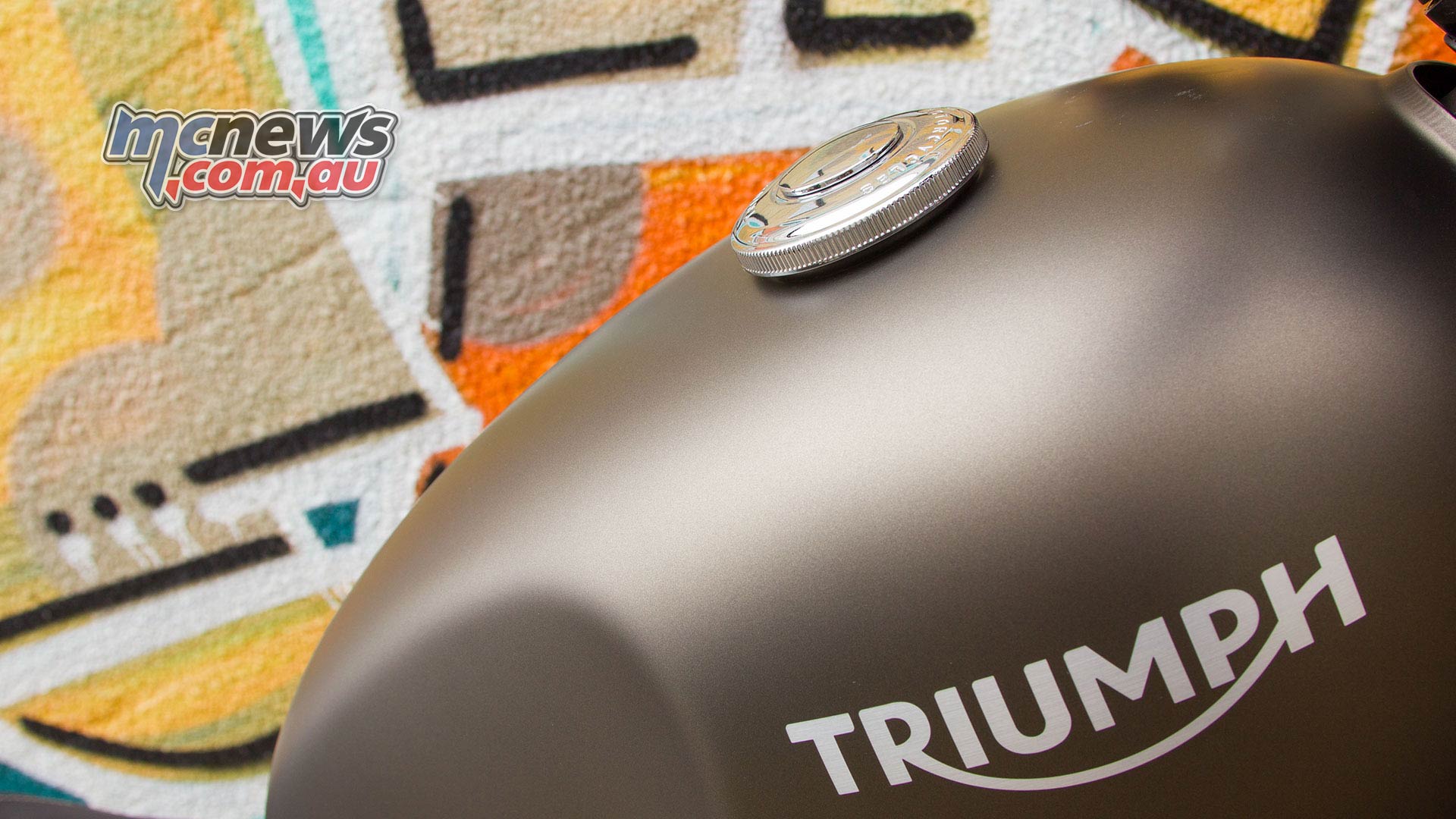
You don’t get a massive amount of range on a tank. The most I saw over a month’s riding between them was around 280km for a tank, which is ample for this type of bike – it’s no tourer with a 12L capacity. And the accuracy of the trip-meter nearly caught me out too. It’s not mucking around.
I was expecting it would leave some fuel up my sleeve, but it was pretty much bang on. Cue the ‘oh-shit-I-gotta-find-fuel-in-the-tank’ shake from side to side trying to find fuel in the tank as I wobbled the last couple of kays to the servo. Aherm. Nothing to see here folks. Everything’s under control. Not the droids you’re looking for.
These are both terrific little classically styled bikes. I really enjoyed them both. More than I thought I would to be honest. They’re an absolute joy to ride, without needing to be ridden fast for that enjoyment – just the ride itself.
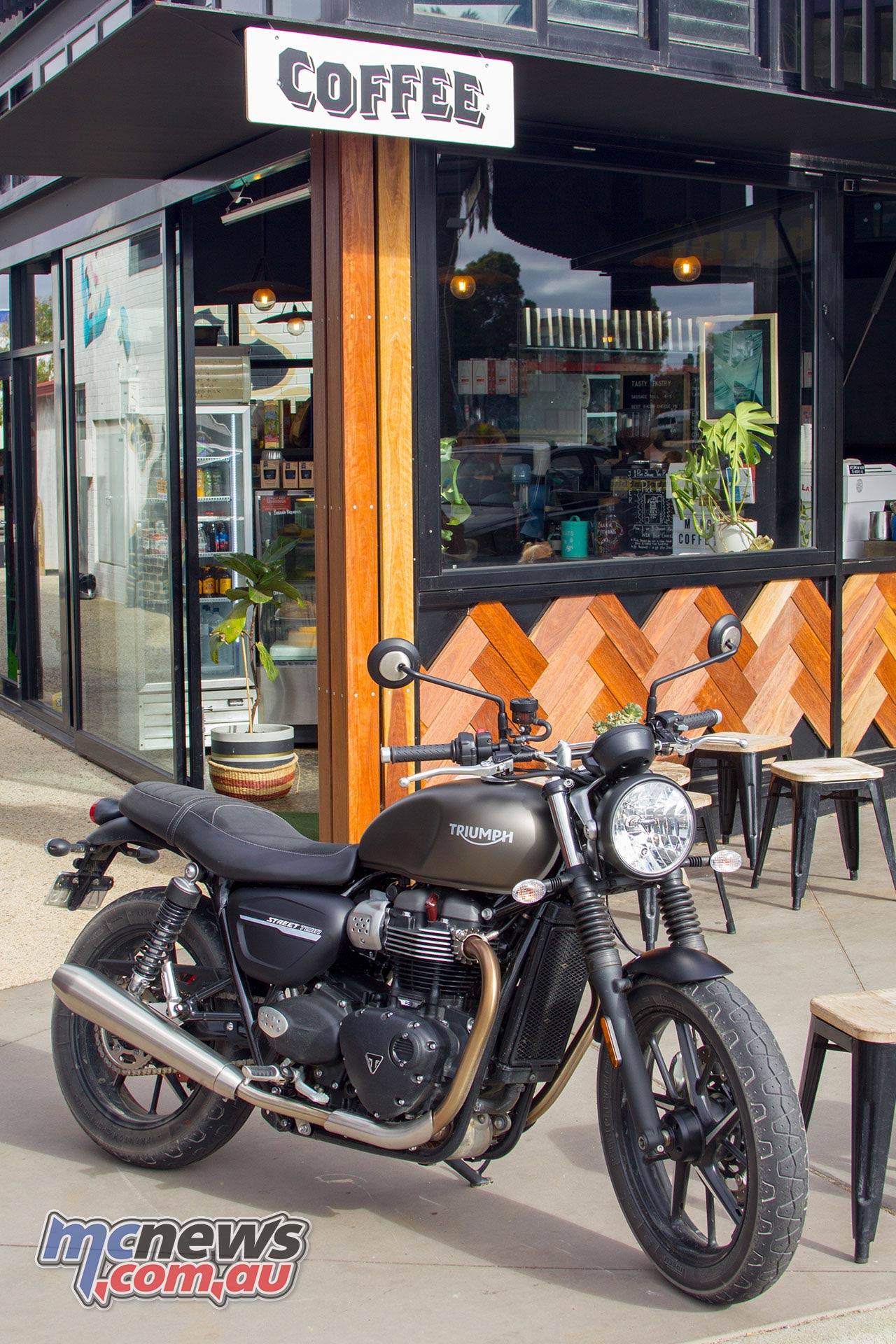
They’re excellent in traffic, their small size (more-so the slightly narrower Street Twin) makes them super easy to filter through relatively small gaps with ease. They both look tops, the Twin being the black tie version and the Scrambler being jeans and a white t-shirt.
I’d pick… the Scrambler. I think for its more laid back attitude, ‘soft’ road ability and more edgy styling. But I’d probably ask the shop to sharpen up the throttle action a whisker.
Mind you I do prefer the sharper handling of the Twin. Hmm… I better go for just one more ride before I hand it back.
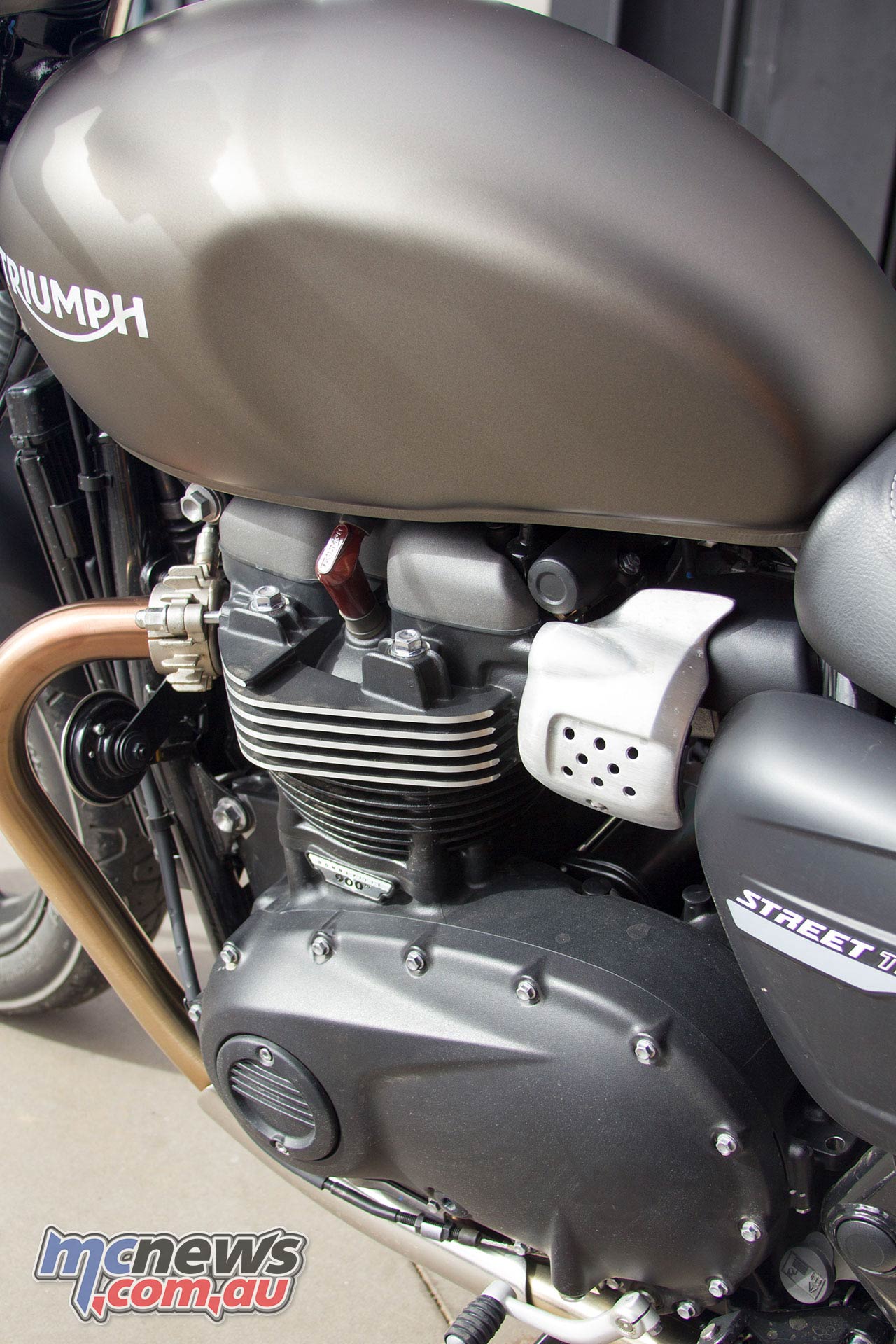
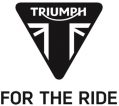
| Street Twin | |
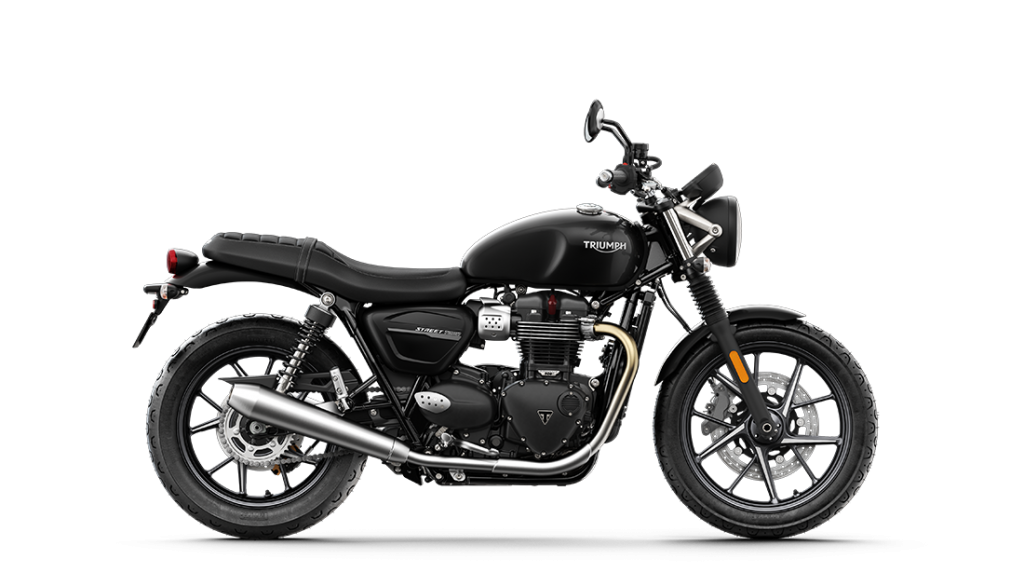 | |
| Specifications | |
| Engine Type | Liquid cooled, eight-valve, SOHC, 270° crank angle parallel twin |
| Capacity | 900cc |
| Bore/Stroke | 84.6 x 80 mm |
| Compression Ratio | 11:1 |
| Maximum Power | 65PS / 64 BHP (48 kW) @ 7500 rpm |
| Maximum Torque | 80 Nm @ 3800 rpm |
| Fuel system | Multipoint sequential electronic fuel injection |
| Exhaust | Brushed 2 into 2 exhaust system with twin brushed silencers |
| Final drive | O ring chain |
| Clutch | Wet, multi-plate assist clutch, |
| cable operated | |
| Gearbox | 5-speed |
| Frame | Tubular steel cradle |
| Swingarm | Twin-sided, tubular steel |
| Front Wheel | Cast aluminium alloy multi-spoke |
| 18 x 2.75in | |
| Rear Wheel | Cast aluminium alloy multi-spoke |
| 17 x 4.25in | |
| Front Tyre | 100/90-18 |
| Rear Tyre | 150/70 R17 |
| Front Suspension | KYB 41mm cartridge forks with cartridge damping, |
| 120mm travel | |
| Rear Suspension | KYB twin shocks with adjustable preload, 120mm rear wheel travel |
| Front Brake | Single 310mm disc, Brembo |
| 4-piston fixed caliper, ABS | |
| Rear Brake | Single 255mm disc, Nissin |
| 2-piston floating caliper, ABS | |
| Length | 2,090 mm |
| Width (Handlebars) | 785 mm |
| Height Without Mirrors | 1,114 mm |
| Seat Height | 760 mm |
| Wheelbase | 1,415 mm |
| Rake | 25.1 º |
| Trail | 102.4 mm |
| Dry Weight | 198 Kg |
| Fuel Tank Capacity | 12 L |
| Instruments | LCD multi-functional instrument pack with analogue speedometer, engine rpm, |
| odometer, gear position indicator, fuel gauge, range to empty indication, | |
| service indicator, clock, 2x trip, average & current fuel consumption display, | |
| traction control status display, TPMS ready & heated grip ready – controlled by | |
| a handlebar mounted scroll button. | |
| Fuel Consumption | 3.9/100km (72.4 MPG) |
| CO2 Emissions | 89.0 g/km |























